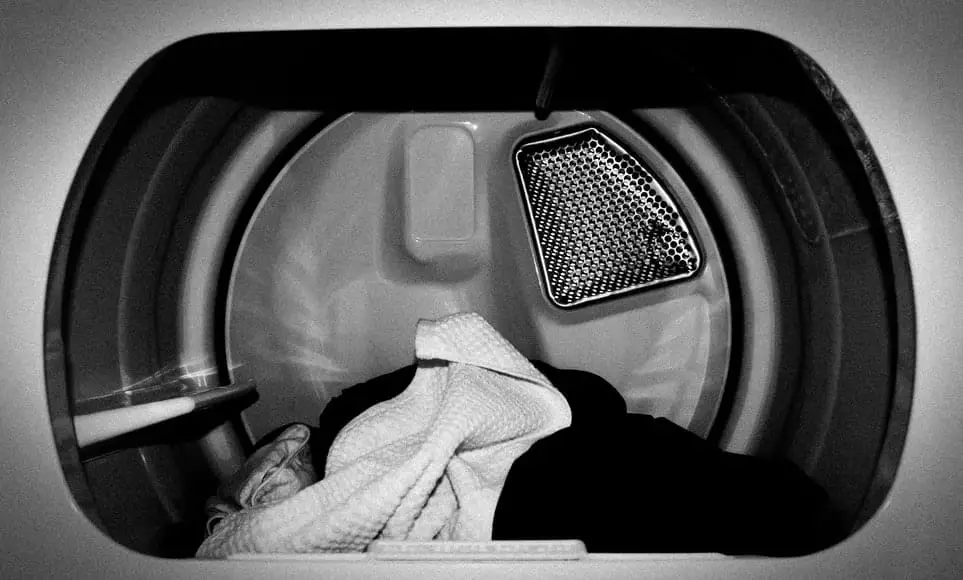Daily chores like laundry keep a family functioning.Except for cooking and cleaning, washing clothes is the only interesting task, and without machines and dryers, it would be hell.
Dryers are essential for this. Since it’s always summer, drying clothes in the sun should take longer without it.In winter, when more textiles are utilized for warmth, the dryer is useful.
Broken appliances are bothersome, so use and repair them according to the manufacturer’s recommendations.However, most people don’t read instruction manuals and ignore the manufacturer’s warnings, causing innocent blunders.Simply said, wet garments cannot dry. Avoid drying wet garments for good reason.
Table of Contents
Can I put soaking wet clothes in the dryer?

No.
Putting soaking wet clothes in your dryer is not recommended and puts both you and your machine in possible peril. Here’s why;
Your Energy Bill Will Soar
Machines like dryers use electricity. Only your fridge and freezer outperform your dryer in this aspect, but your dryer does not run endlessly, thus it presumably should consume even more if it ran indefinitely like a fridge. Dryers have several methods, but most use heat to remove moisture from textiles.
Using a dryer efficiently without using too much electricity is to make sure the clothing have as little moisture as possible before drying them. So, less time and energy are spent removing moisture from garments, keeping your energy bill low.
Let the spin cycle after the wash cycle drain your items. That manner, the dryer quickly dries out the remaining moisture, leaving you with clean, fresh garments.
You Will Cause Damage To Your Machine
A clothes dryer can only handle so much weight, which soaking wet clothing often have. Lifting a pail of dripping wet clothes vs a pail of the same garments without water is a tremendous difference. Waterlogged garments are weighty. Dryers rotate and tumble clothing to circulate air and dry them.
Wrung-out garments tumble around in the dryer, but wet clothing don’t, which means the tub’s weight imbalance could damage it. Another way you could damage your dryer is with excess water. The drying mechanism easily heats up the air in the tub and the little moisture content heats up as well leaving the fabric and evaporating easily out through the vents.
At approximately 60 degrees Celcius, a slow steady stream of moisture exits the clothes and the tub into the vents.
Cause Damage
A dryer does not drain water, it coaxes moisture out of clothes by moving heat and air through the clothes in a tumbling motion.
If there is an abundance of water in the dryer such as with soaking wet clothes, the dryer would have to heat up the chamber to over 100 degrees Celsius just to start an evaporation process.
The tumbling would be difficult to achieve given the excess weight and the air movement through the clothes would be impeded by the presence of water.
If by some luck the water could be evaporated out of the clothes, it would not be able to leave the tub fast enough since the dryer vents are made for gaseous flow, not liquid flow.
The water would immediately condense in the vents and create a bottleneck effect stopping air movement from progressing smoothly. This could become a fire hazard.
It Is a Fire Hazard
The spin cycle at the end of the wash cycle serves to eliminate as much lint as possible from clothes. Soaking wet clothes would have a huge amount of lint which will adhere to the vents of the dryer.
Over time this build-up will interfere with airflow which will distort the dryer’s ability to properly distribute heat. An excess of heat in the chamber or the vents will ignite the highly flammable lint fibers which do not take much to ignite and cause a fire in the process.
Given the processes expounded above, the danger of progressively or spontaneously causing a fire becomes imminent.
The strain introduced to all parts of the dryer especially the mortar may not just affect its performance and escalate your electricity bill but more than likely putting soaking wet clothes in your dryer will eventually cause a fire.
What Happens When You Put Wet Clothes In The Dryer?
You might have a ball of soaked clothes that require drying or an emergency like falling into a swimming pool. And all your mind is thinking of is throwing the wet cloth inside the dryer- but oh no! Here is why this might not be a brilliant idea:
Damage the Dryer
Your dryer will deal with moisture and water from soaking garments, which overwhelms the bearing. Tight, silent dryers are typical. Still, an overload may pull the drum out of alignment, causing loud vibrations and rapid wear.
How Can Wet Clothes Be In the Dryer?
It is advisable that the clothes be damp and not soaking when placing them in the dryer. Therefore it is ideal for the clothes to spin cycle (this is when you use the laundry machine to shake the excess water from clothes before tumble drying them in the dryer) or wring them of the extra water. Air dries them outside for about 30 minutes to an hour.
How to Dry Soaking Wet Clothes

Clothesline
You are lucky to have a dryer if you hand wash your clothes. First, Air dries them. Gently squeeze and wring out the excess water as you can, then Air dry them for about 30 minutes to an hour to be safe.
You can use what is available such as a clothing line, laundry rack, or a bunch of hangers. Hang your clothes, so they don’t touch each other for breathability and effective drying.
Now, after 30 minutes to an hour, the clothes will be suitably fit for drying in the dryer to finish the job.
Spun-Dry Clothes
Laundry machines can run a spin cycle automatic at the end of a wash. Nevertheless, it can be run separately, too, meaning you can give your hand-washed clothes a shake without having to use extra water.
Once the spin cycle is complete, the clothes are left damp but not soaking, which is the perfect level of wetness for going into the dryer.
What Happens If Water Gets In Your Dryer
The weight and water itself can damage your dryer. Water can cause rust, mold, and rotting if it pools around metals, extreme humidity, or leaks into your property. Soggy garments in your dryer would leak to the drum, causing electronics issues because water and wires don’t mix.
Continuous water exposure causes rust, which damages your dryer depending on how much water escapes and how well it dries. Soaked garments in the dryer reduce efficiency and wear. However, dryer and washer specifications are crucial. You can also drain out excess water before drying clothing in the dryer to protect your equipment.
Finally
The logic behind placing soaking wet garments in a dryer appears sound since its job is to evaporate moisture and remove it, yet dryer physics and engineering suggest the reverse.
A dryer can only evacuate so much moisture from clothes, and very wet clothes exceed this limit. Even if you don’t need to wash soaked garments, wash them first, spin to drain out as much water as possible, then dry them.


